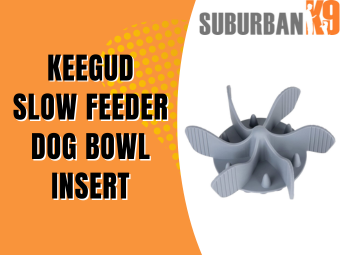Tissues, socks, shoes…the list goes on! Dogs love to get a hold of these items but they’re not always the safest items to turn into toys and we don’t want our nice pair of Nike’s to become the next chew toy! Common household items dogs often chew aren’t always soft material items, but could also include the kitchen chair legs and baseboards. Not only is having items throughout our house chewed up unsightly, it can also become quite costly to have to replace and repair items as time goes on.
Humans and dogs learn and process the world through the same five senses; taste, touch, sight, sound and smell. Even though we have the same five senses, we don’t utilize our senses in the same way of learning. Dogs learn and process information the most through their sense of smell - which is why the used tissues, dirty socks and worn shoes seem to be items dogs are most attracted to. For a dog to learn which household items are and are not appropriate for them to use as chew and play toys, they have to make the mistake of grabbing that item to learn it is inappropriate and unwanted.
When teaching our dogs which items they can and can’t play with in the house, we want to offer a wide variety of toys and age appropriate chewing items that our dog is allowed to have. If we don’t offer appropriate options, we will feel as though we are always telling our dog “no”. We want to praise them when they choose a correct item and if in the early days of teaching, we can swap the inappropriate item for a dog toy or bone if they choose incorrectly. After a few tries of the swap method, we can begin telling our dog “no” and correcting them for grabbing an inappropriate item.
Something to keep in mind when working through item discernment with our dogs is that our dogs don’t come preprogrammed already knowing what is and isn’t appropriate to grab and play with. With that in mind, if we constantly keep items out of our dogs reach and kept away behind closet doors, our dog isn’t going to truly learn what they can and can’t play with. We are simply avoiding the opportunity for them to make an incorrect decision. This doesn’t mean that we have to leave our house with clutter everywhere when our dog is learning - it does mean that we should give our dog opportunities to get into unwanted items when they are very well supervised and we are setting up training opportunities.
Remember that learning is a process and it isn’t something that is going to happen over night. Setting up training scenarios and working with your dog is going to give you the highest success rate of your dog becoming the best family member possible! A good time to practice these training scenarios could be in the evening when you are sitting down to watch TV and decide to take off one of your socks and toss it on the floor to see if your dog will indulge. We want to continue training until our dog no longer shows interest in the items for weeks or even maybe months on end. Even though we may set up these training scenarios often, that doesn’t mean that our dog should be fully trusted out in the house with those items easily accessible. Dogs can be very sneaky when doing a behavior they know they aren’t allowed to, so setting up a camera to catch your dog in the act when you’re not watching them in person is a great way to instill the training you have!



